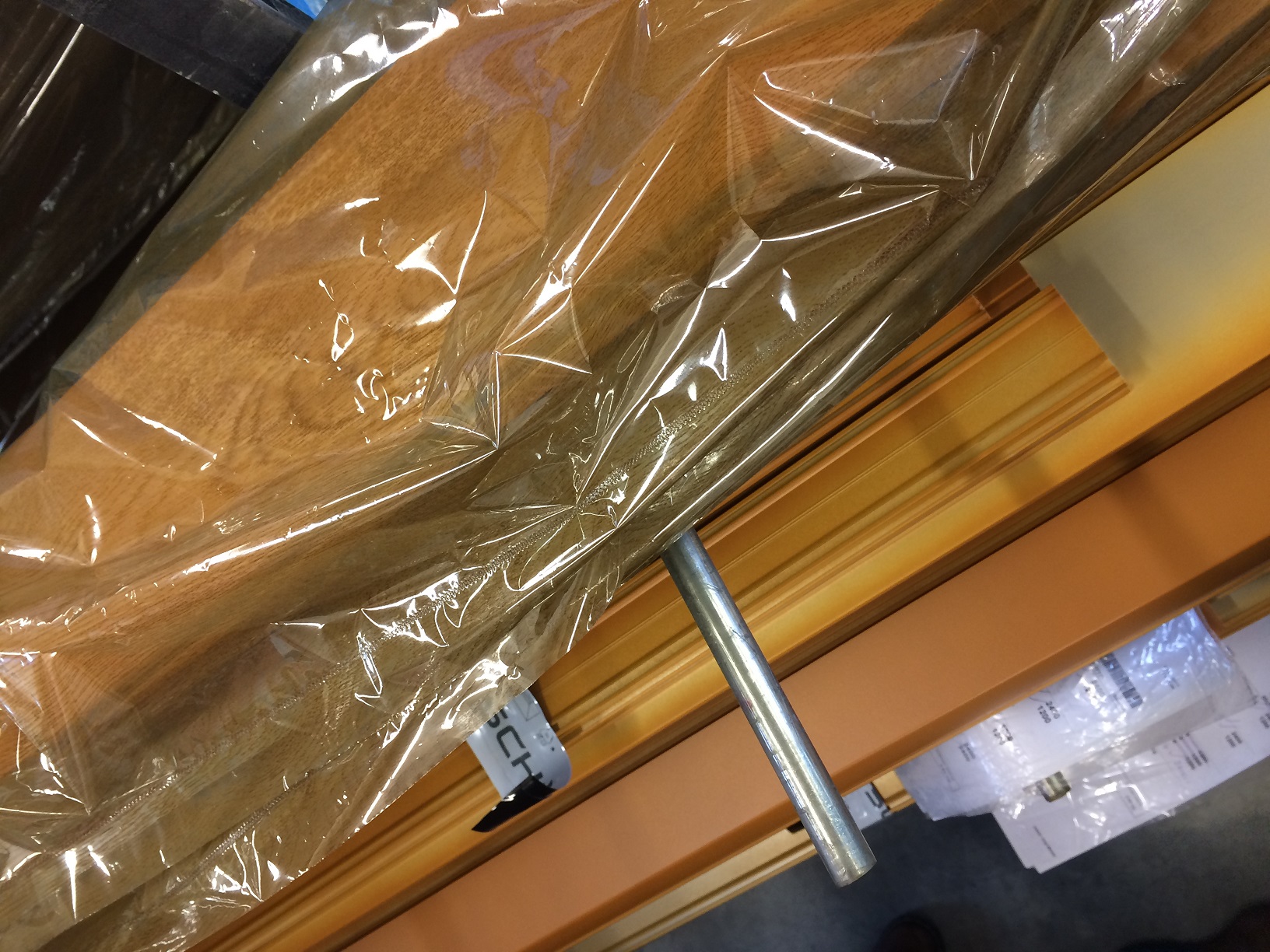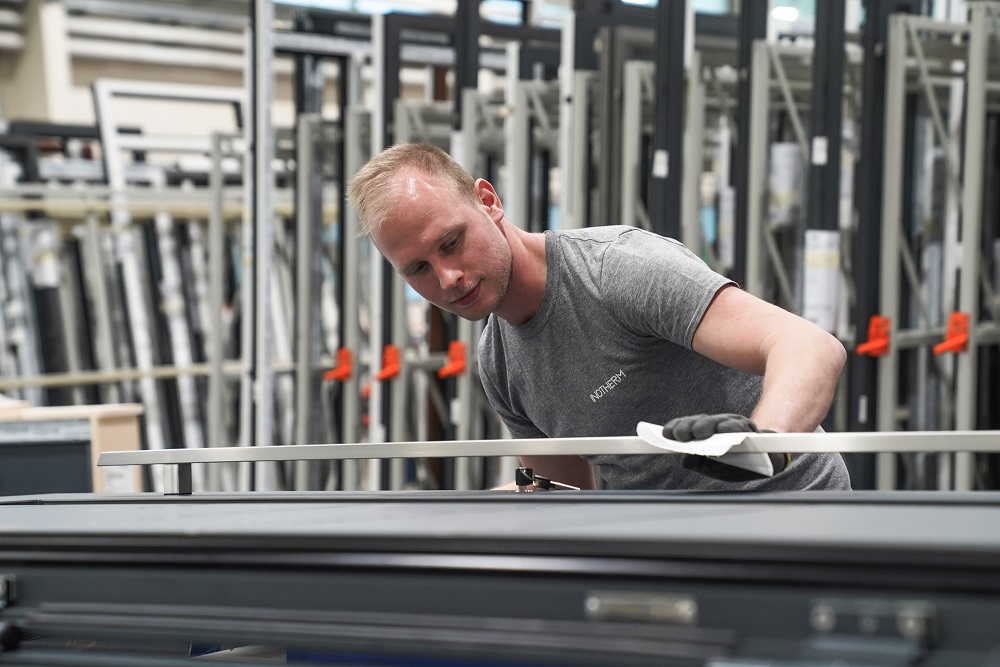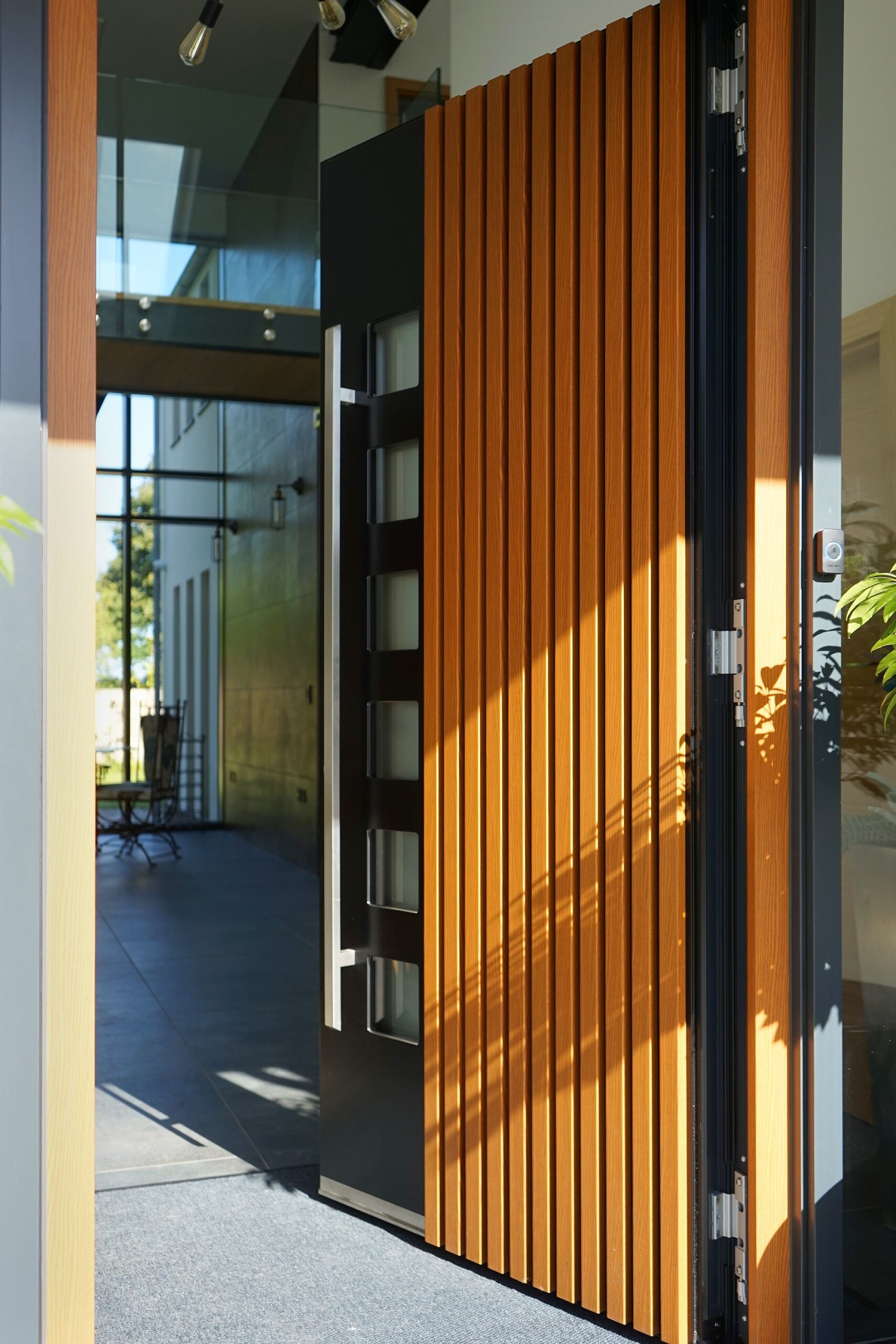Weathered Steel, Corten and Concrete finishes are a rising trend for front doors
When designing a bespoke self-build property, a forever home or renovating your existing home, it is worth taking time to carefully decide on the perfect front door, as it will make a statement about you and your style leaving visitors with a strong first impression.
Corten, rust-weathered finish for front doors
Home-owners with a vision for creating a home with a modern, industrial style entrance door are embracing both Corten, a rust-weathered steel, or Concrete effect finishes. Due to their industrial look, these minimalist finishes can be perfect both inside and outside the house. We have two online Door Designers which will help you configure your perfect door.
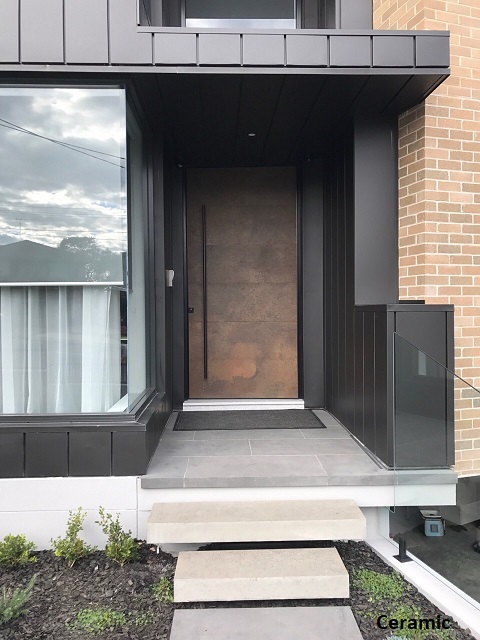
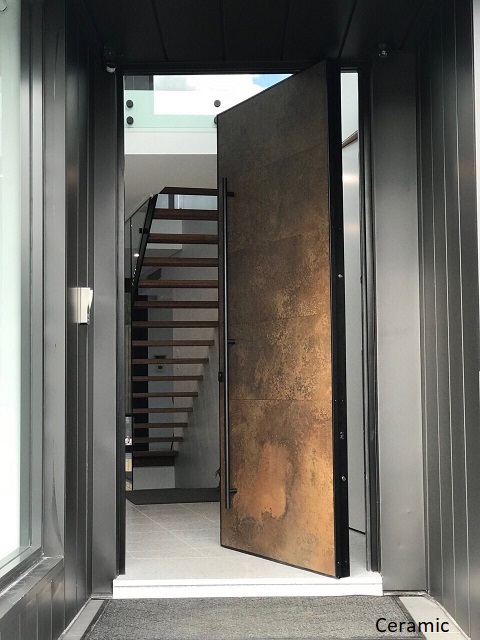
Architects across the UK regularly specify the rusty metal finish called Corten (steel) when specifying cladding, bespoke gates or when designing garden ornaments for contemporary homes. Whilst an authentic steel Corten finish would look fabulous on a front door, as it weathers the steel would require a lot of maintenance and the downside of Corten steel is that it can cause stains that can drip onto areas under the metal, therefore making it an inadvisable material for a front door facade.
The good news is that Spitfire aluminium front doors are available in a wide range of special and unique powder-coated finishes, such as Corten or Concrete effect, offering almost exactly the same finish, aesthetics and contemporary styling as steel, without the downsides of steel or concrete. You can view the gallery of doors here.
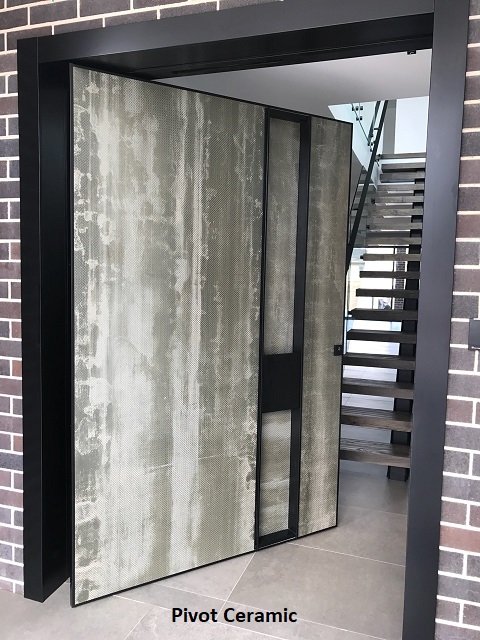
With a Spitfire Aluminium Door, a rust effect paint is baked on to the aluminium skin, creating a perfect, maintenance-free finish which will look fabulous for many years to come. Rusted metal, concrete and leather effect finishes are all available within the three ranges of Spitfire Doors and are a popular choice for front doors in luxurious homes.
Door frames can be specified in the same colour or finishes or a contrasting RAL colour and finish, to create a truly bespoke door. As well as looking fabulous, Spitfire Doors meet PAS 24 security levels and are extremely thermally efficient. Spitfire doors can be manufactured up to an impressive 2 metres wide by 4 metres high, to create the perfect grand entrance to your home.
We have two online Door Designers which will help you configure your perfect door. The configurators take you step by step through the various options available to you. Just send us, or your local Spitfire Design Partner the design you have created to discuss and to acquire a quotation.
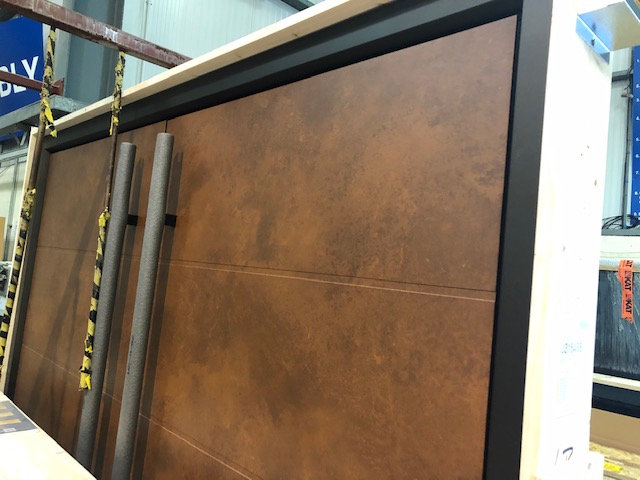
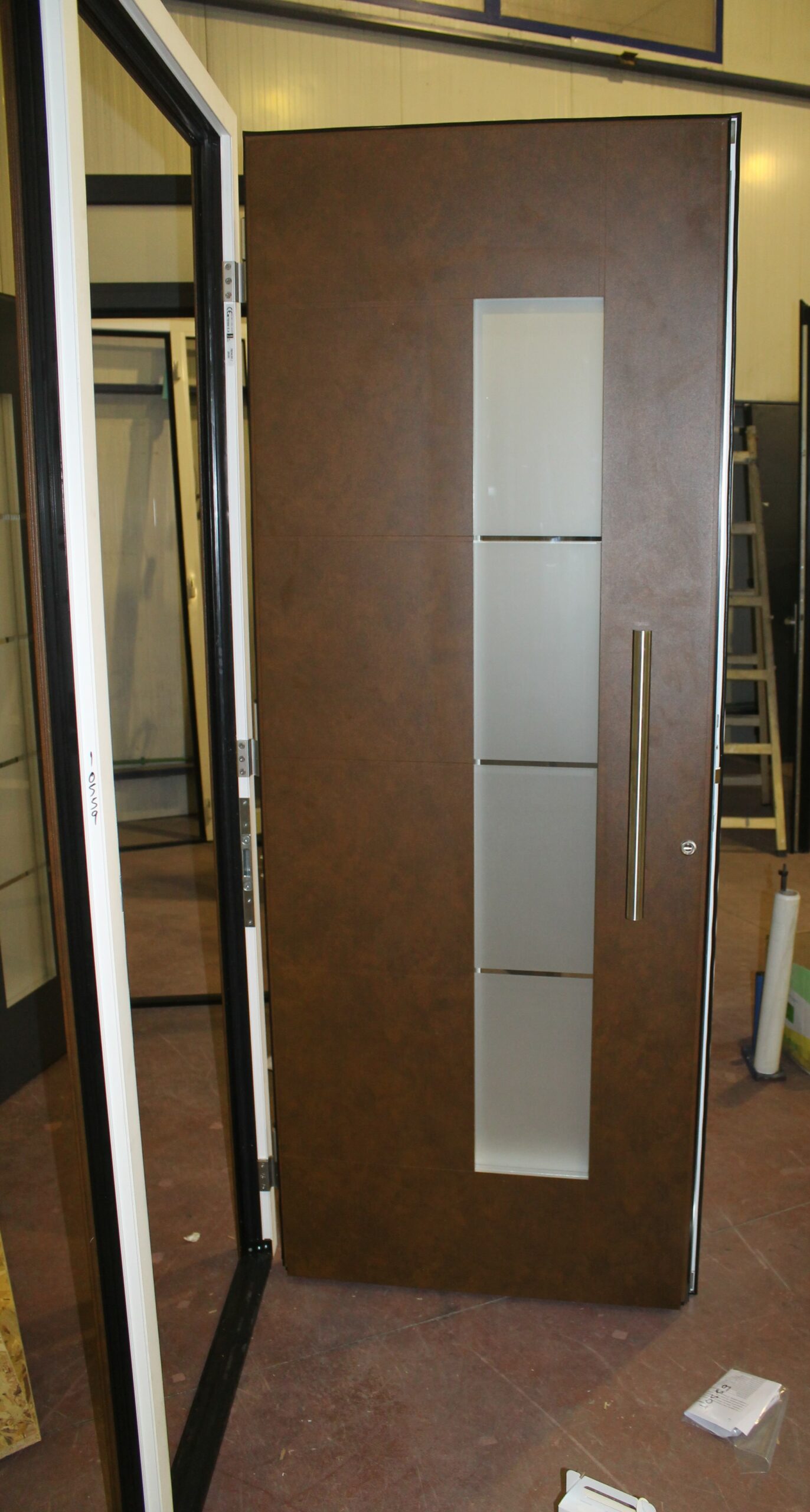
Contact our Customer Services team on 01625 412570 or visit our online Door Designer to configure your perfect door.
High-Security Certified Residential Entrance Doors
What are the recognised Security Grades for doors and why are they important?
Many door manufacturers and door suppliers claim to sell security or hi-security residential entrance doors, but in the security industry, doors will only be classed as ‘Security Doors’ if they have been independently tested. In the UK, the entry level independent testing standard applicable for most homes is PAS24, which is often badged as SBD or Secured By Design. It is vitally important not to rely on declared characteristics and the claims of a manufacturer, always ask to see their Independent Testing Certificate from a qualified European Test House.
European Standard – EN1627
In Europe, the safety standard is EN 1627. Accredited European laboratories test functionality, weather resistance and defence against mechanical intervention. Test results are recorded and examined by the certification body and only if a door passes all tests will a Certificate of Conformity be awarded.
The British Standards Institute (BSI) implements security standards in the UK and the most updated version is BS EN 1627:2011. There are 6 levels of resistance classification (RC1-6), which comprise the EN 1627 standard. The levels determine the level of burglar resistance offered by a security product.
Classes RC1, RC2 and RC3 are primarily focused on the levels of attack associated with a casual or opportunistic intruder. It is likely such an intruder would use stealth to avoid attracting attention and utilise hand-held tools or basic levers to facilitate forced entry. PAS24 or SBD falls within this category.
Classes RC4, RC5 and RC6 are associated with the more experienced or professional intruder. This would include attacks which were intentional and well-planned, with forced entry attempted with larger and/or single operator power tools.
EN 1627 represents the European Standard for the burglar resistant classifications of domestic and commercial doorsets. This standard was developed by the European Committee for Standardisation (CEN) which is comprised of the national standardisation bodies of 34 European countries.
EN 1627 forms part of a series of European security standards (EN 1627 – EN 1630) with the aim of agreeing and implementing an industry-standard, minimum level of enhanced security for doors across Europe.
The EN 1627 classifications are determined by meeting the specified hardware requirements alongside the level of resistance achieved in 3 ‘type’ tests. The first test measures resistance under static loading and is designed to measure the overall mechanical strength of the product.
The second test which is dynamic loading, assesses the level of resistance to physical attacks without the use of tools, such as kicking or shoulder barging.
The third test method is manual testing, which assesses the ability of a product to withstand attempts at forced entry using a selection of tools, over a stipulated period of time.
Spitfire Doors Certification
Spitfire S-200 doors and S-500 Signature Series aluminium doors have both been Tested and Awarded PAS24 certification by BSI in the UK.
The Spitfire Hi-Security Armoured ranges of Hinged and Pivot doors have been Tested and Certified by the Institute Giordano in Italy under ENV 1627-1. You can find the certification label on your door and this guarantees that your specific armoured door is certified to ENV 1627.
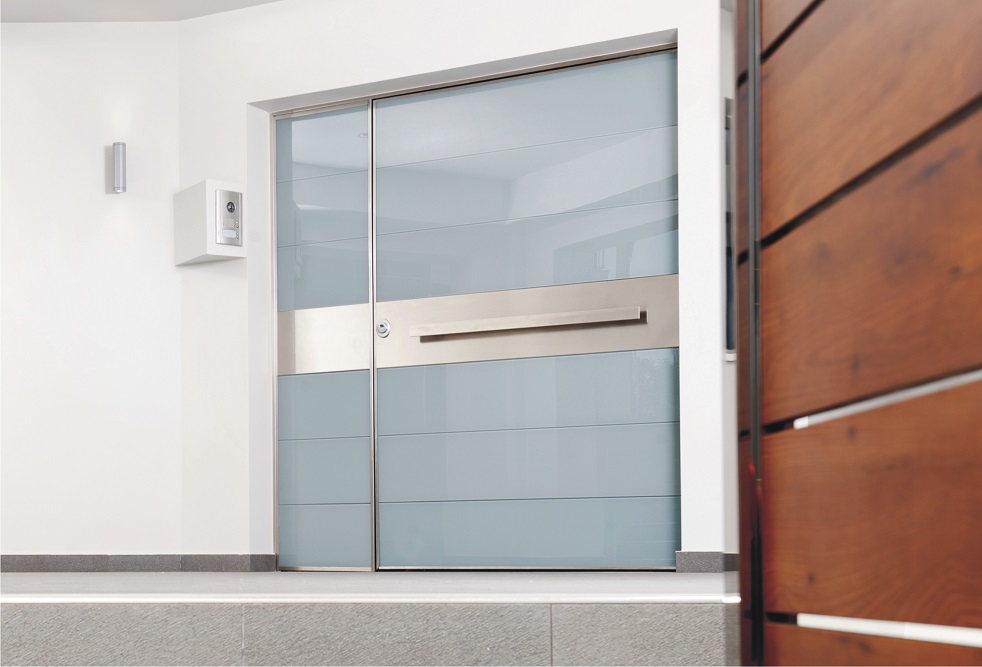
Design Choices
All Spitfire Doors are fully customisable, even our doors with the highest security rating. From Spitfire Doors you are free to select either a conventional security hinged door or a security Pivot. Both ranges are offered with many external and internal finishes to include: powder coated aluminium, bronze, ceramic, glass, wood or mirror. The internal core structure of your security door will comprise levels of steel plates and then your door can be clad with your choice of skin material e.g. aluminium, ceramic or wood.
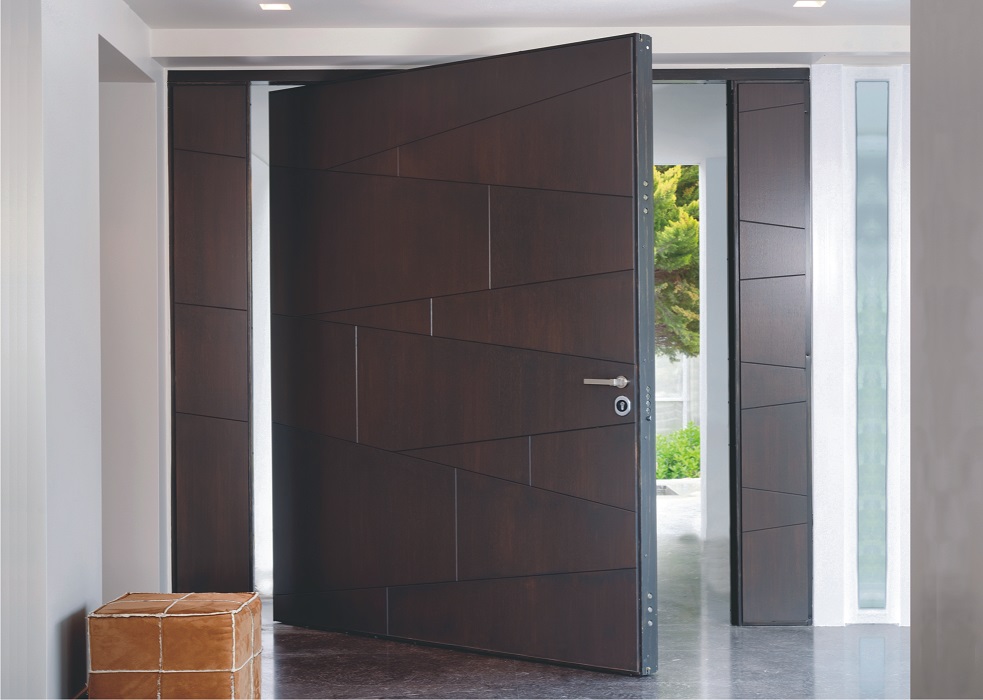
Bank Vault Doors
Spitfire Doors can also offer bank vault doors which offer superb protection against manual, mechanical or heat related attack, with door thicknesses ranging from 25cm to 45cm. All bank vault doors are supplied with 2 x 4 wheel anti-observation combination locks which have 1 million combinations and a 3 movement time lock that offers up to 144 hours locking.
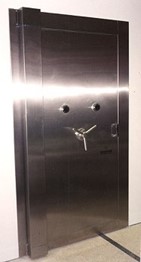
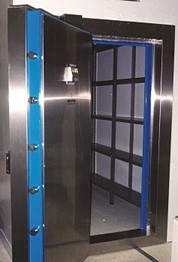
Fire Rated Spitfire Doors - Certified by Cambridge Fire Research Limited
We can offer you an unique, innovative door which combines 2 different types of protection - Class 3 Certified Security Resistance and Certified Fire Resistance for 240 minutes (4 hours).
Certificate Number CFR1704121 dated 12th April 2017 to BS476 Part 22:1987.
Our Fire Rated Security Doors can be equipped with a mechanical, electrical, electronic lock or with a panic bar.
These doors are suitable for apartments, hotels, public buildings, airports, hospitals, public spaces or private projects where fire protection is required along with resistance to possible burglary.
Another advantage of Spitfire fire-rated security doors is their aesthetic flexibility because we offer the possibility of selecting almost any external and internal cladding material e.g. ceramic, mirror, glass, wood etc.
So, let your imagination run free; choose the style that fits your home, without any compromise in fire resistance and anti-burglary properties.
Contact our Customer Services Team for more information.
Biometric Fingerprint Technology
What is Biometric Technology?
Biometrics identification is the only mode of authentication that can unequivocally validate a person's identity. Biometric authentication is the automated recognition of an individual using unique physiological characteristics, such as fingerprints, which have been pre-stored in a biometric security system or scanner. Biometrics most commonly refers to the use of technology to authenticate or identify a person based on their Fingerprint. Fingerprint readers analyse a fingerprint to digitally identify a person to grant access to systems, devices or data. There are other systems like face recognition, voice, hand geometry, Iris recognition, and DNA but fingerprint readers are most prevalent and are the only biometric solutions fitted to high-end aluminium residential entrance doors.
 Why select a capacitive fingerprint scanner to unlock and open your front door?
Why select a capacitive fingerprint scanner to unlock and open your front door?
Of all the biometric techniques, fingerprint scan is the most convenient and most secure way of proving identity, guaranteeing trusted access to the right people, at the right times. Plus, capacitive scanners are very reliable and easy to use. Children's fingers from age of 6 upward are recognized and Spitfire Doors scanners are easy for young and old to use.
The Signature Spitfire Doors capacitive fingerprint reader requires the user to simply press and briefly hold the finger on the scanner for less than a second to open the door, which is a huge improvement over the old technology and far less reliable ‘swipe’ scanners.
The Signature Spitfire Doors fingerprint scanner is intuitive and each time you use the scanner our unique algorithm adapts to your finger. This unique feature is particularly useful in hot and cold conditions because the scanner will still recognise your finger as your finger expands and contracts. The encrypted software guarantees peace of mind because it means your entrance door is totally secure.
Design your unique front door complete with fingerprint scanner
Are Fingerprint Readers Secure?
Your unique fingerprint is much more secure than a key, which could be stolen, copied or lost. Authorized individuals can be programmed to unlock a door using their unique fingerprint. And a fingerprint scanner is one thousand times more secure than the 4-digit code on a bank card.
A fingerprint reader has a patented fingerprint recognition algorithm at its core and biometrics are extremely hard to fake. Our advanced reader is very sensitive and detects the temperature of a finger placed on it, if the temperature is outside normal parameters the scanner will deny access.
No impression remains on the scanner when you use a Spitfire fingerprint scanner, which provides an extra level of security.
Biometrics provide strong authentication and accountability because no-one can later deny having accessed the scanner, because the scanner retains a record of activity.
Unlike keys or passwords, biometrics are non-transferable and the Spitfire Doors scanner unlocks the door in 1.2 seconds.
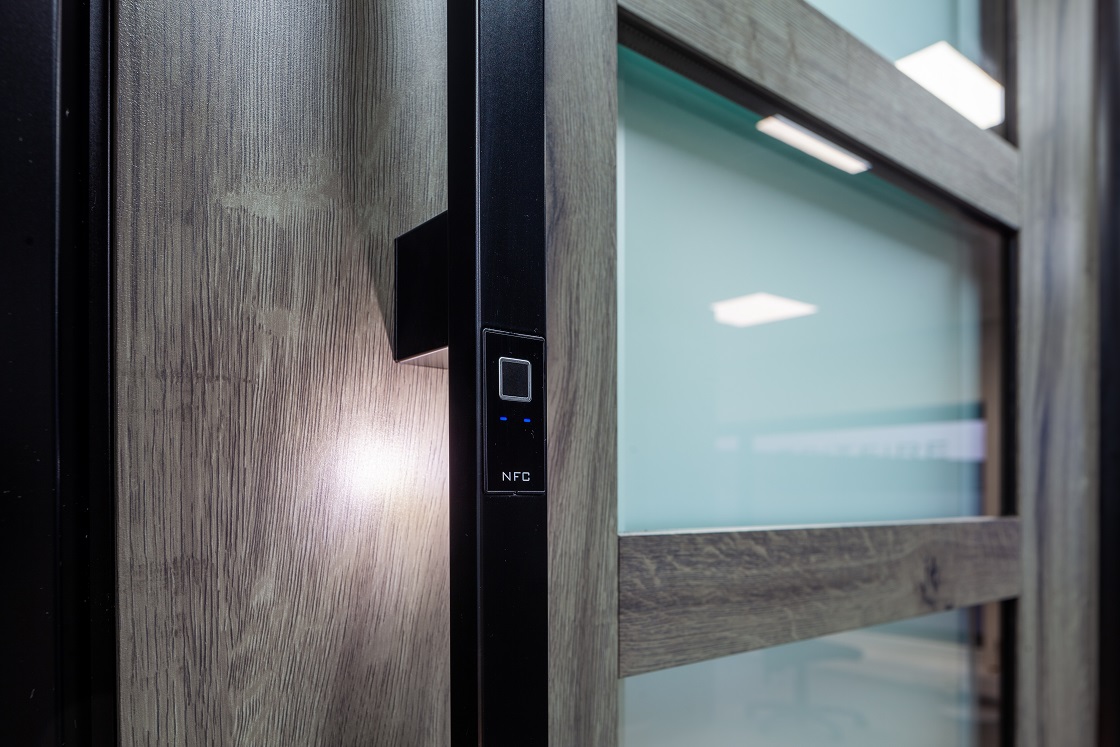
What is NFC Technology?
Near Field Communication (NFC) is a contact-less communication technology based on a radio frequency field using a base frequency of 13.56 MHz. NFC technology is perfectly designed to exchange data between two devices when they touch, or are in very close proximity to each other and that is why millions of modern payment terminals now feature NFC. You will have witnessed the rapid transaction between a contactless credit card and an NFC device, which is just like the contact between your Spitfire Doors fingerprint reader and your Smartphone will be.
The latest generation of Spitfire Doors feature NFC readers, that will communicate with our Smartphone App, meaning you can open your Spitfire Door using your Smartphone as you approach the door. The security of near field communication technology is emphasised by the word “near”. NFC signals only transmit data centimeters away from the NFC device and unlike wireless internet technology, near field communication signals can’t be hacked from across town, across the street or even across the room.
NFC is actually a subset of RFID (radio-frequency identification), a technology that allows identification through radio waves.
Can other technology be integrated into a biometric scanner?
Fingerprint readers and electrical unlocking systems allow more effective connections with smart phones.
The Spitfire Doors scanner has a double relay so that a second door could be programmed and opened using the same scanner; eg. a garage door or adjacent gate. An intercom system can also be wired into your door, allowing you to unlock the door with a single 24V pulse.
If your door or handle has LED lighting built-in, this can be controlled via the Smartphone App and scanner.
Spitfire Doors fingerprint readers can be combined with a codepad and wireless doorbell, in one small and aesthetically pleasing unit which is flush mounted on your door sash. These unique combination units can be integrated within the external pullbar handle or built-in to the external face of the door.
Our online Door Designer will help you configure your perfect door.
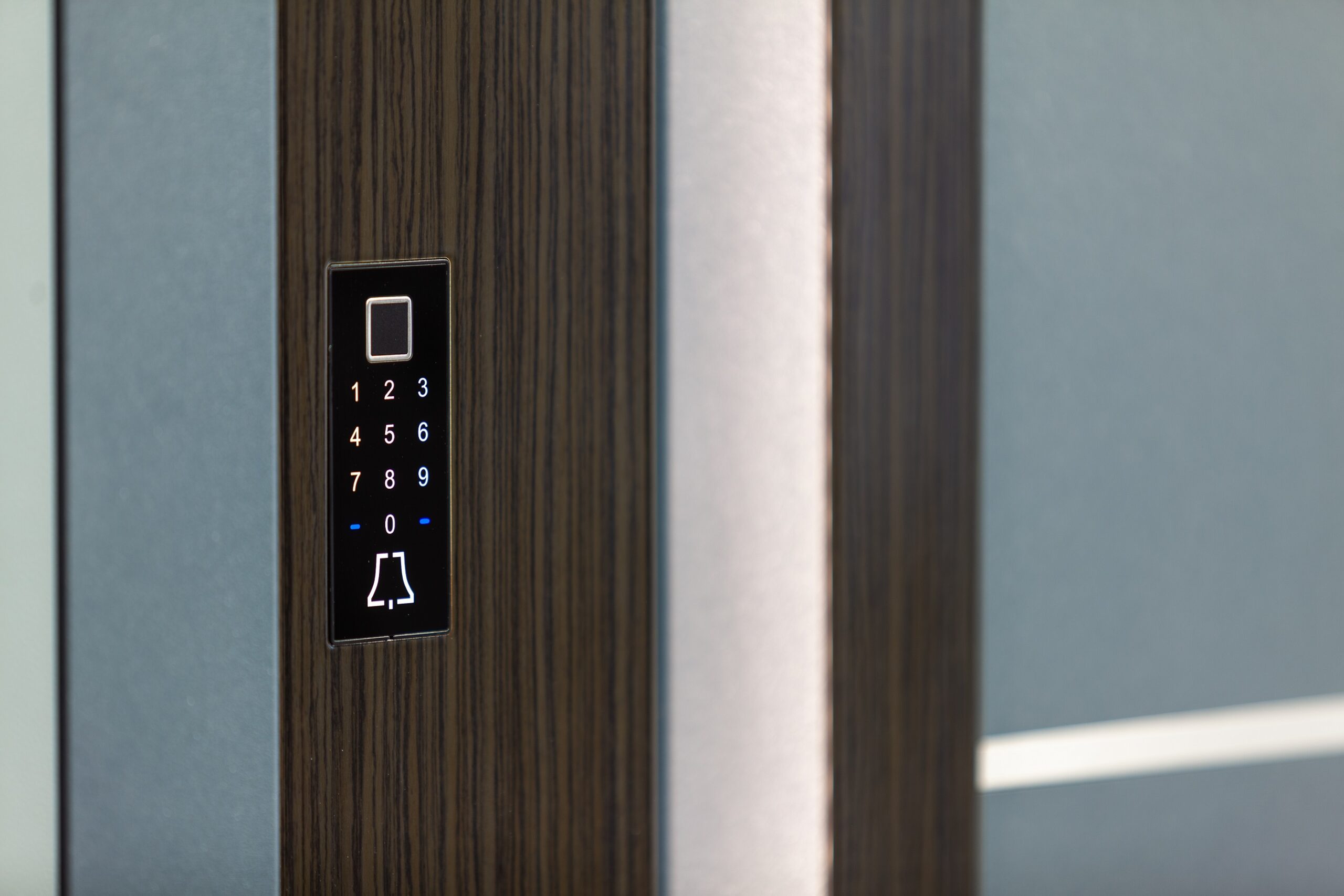
How easy is it to programme a scanner?
Fingerprints can easily be added to the Spitfire scanner using our Android or Apple Smartphone App or by using the control buttons located between the hinges of the door itself. There is no need for a PC or sets of buttons on the door itself. Only an ‘Authorised Administrator’ can grant access to other users, by first unlocking the scanner using their own fingerprint before they record a new users finger.
Adding a new user to the Spitfire Doors fingerprint scanner takes about 30 seconds and they can be removed just as quickly.
Can you allow free access through the door during a party for example?
Yes, our scanner has a ‘Free Access’ mode which can easily be activated or de-activated via our Smartphone App. This mode overrides the scanner technology and will allow any fingerprint to be read to open your Spitfire door, until you re-activate the scanner.
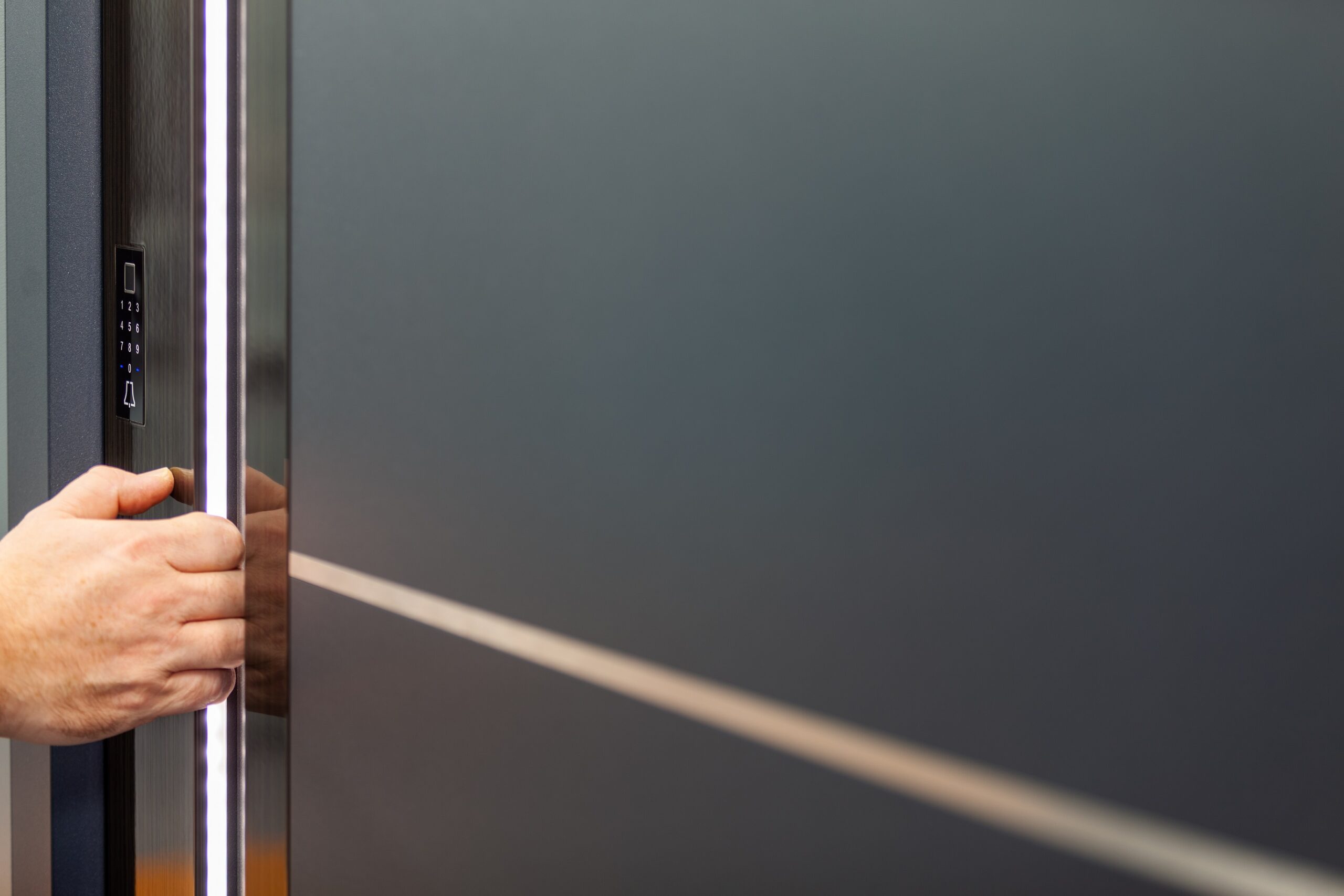
Can I check who is using my scanner?
Yes, via the App you can view the last 100 visitors and what time of day they entered.
Plus, you can restrict access to a user or users, at different times of the day e.g. cleaners or gardeners.
What type of lock is fitted on a Spitfire Door with fingerprint or codepad access?
An extremely secure, multipoint, electronically operated lock will be fitted to your door. This lock will be released when the scanner recognises a valid fingerprint, and you can simply push the door open.
Immediately as you close the door from either inside or outside, the electronic lock will automatically operate and all locking points will engage inside their security keepers with a reassuring whirr.
So, whenever your Spitfire Door is in the closed position, it will be totally secure with all locking points engaged. Safe, secure, sophisticated.
What happens in a power cut?
Your electronic lock will still operate if you access your Spitfire door using a key.
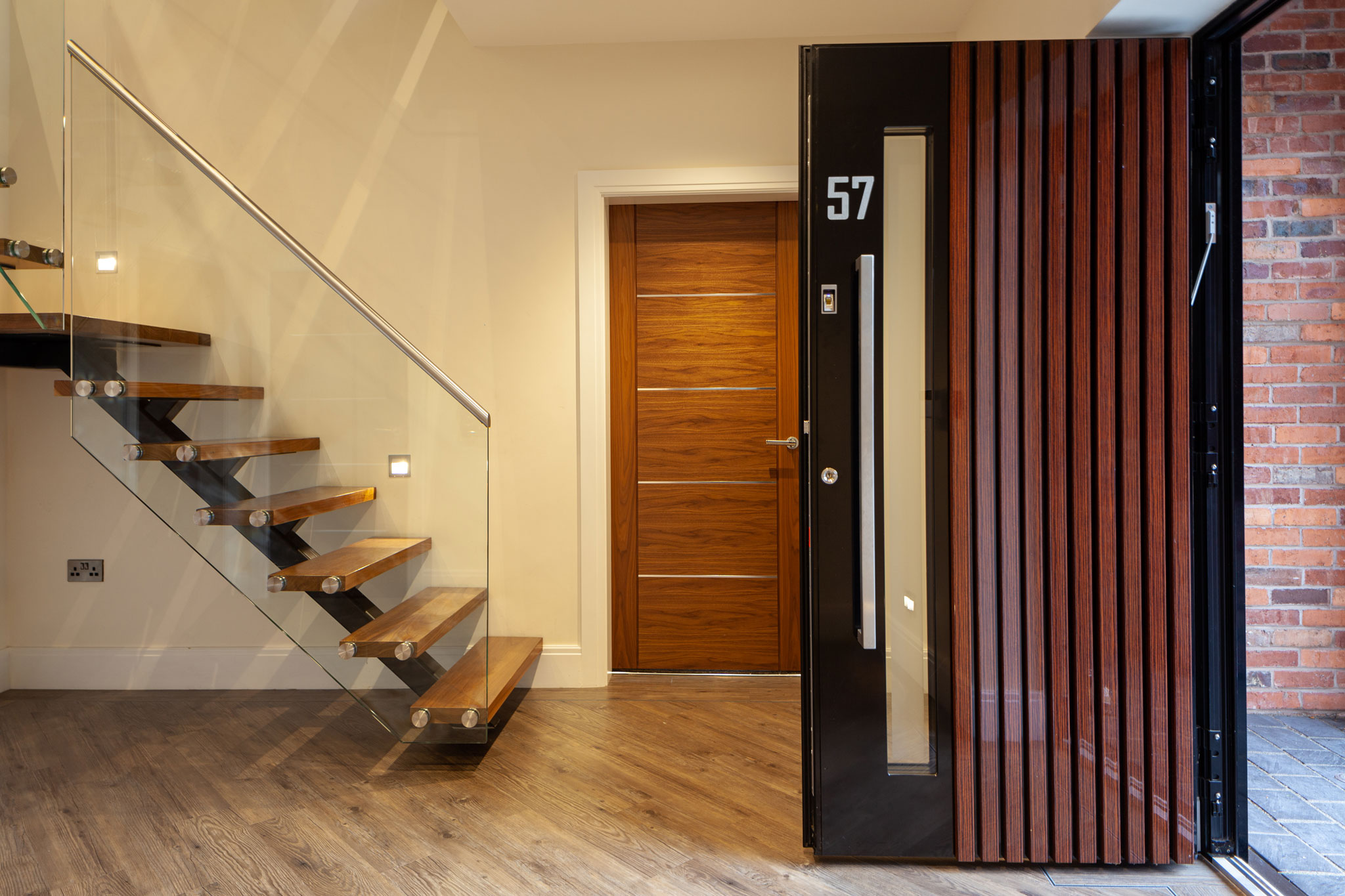
Find out more about our S-500 Signature Series Doors
Paint Powder Coating and Decoral® Luxury Effects
Spitfire Doors are all powder coated and many customers request doors with an extra treatment, to add a sophisticated finish, like wood, concrete or carbon-fibre effect.
What is powder coating?
Powder coating was first developed in the 1950’s and is a dry finishing paint process used in many industries where a high quality, long lasting finish is required. Powder coating will retain its perfect finish for up to 20 years with negligible fading. Powder coating is noted for its resistance to chemicals, corrosion and weather.
Why choose to Powder Coat?
Since around 1980, powder coating has been increasingly accepted as the preferred industrial finishing process for many products, including residential entrance doors. The reasons for the conversion from wet to dry powder can be attributed to these key factors:
- Material utilization is much higher with powder, with 92%-98% of the powder being utilised versus an average of 60% when using an electrostatic liquid system. The remaining 40% of liquid paint is toxic and has to be carefully disposed of.
- Powder is not considered hazardous waste, so the cost of disposal is minimal.
- Air used in the powder coating spray booth is returned directly to the plant, eliminating heating and cooling costs.
- The cured powder finish is less susceptible to damage than a liquid finish. There is less need for repair work on the finished item. This results in the need for much less elaborate packaging saving time and cost on re-working and packaging.
- Epoxy, acrylic, and hybrid powders provide excellent adhesion and offer improved resistance to chipping, abrasion, corrosion, and chemicals.
- Polyester powders provide additional advantages in ultraviolet and weathering resistance.
- Stringent regulations are being aggressively enforced in an effort to control air pollution and hazardous waste disposal.
- Powder coating eliminates solvent fumes from spray booths and oven exhausts that pollute the air.
- Potentially toxic sludge from liquid paints could contaminate the earth and must be disposed of as hazardous waste.
Every Spitfire door has a powder coated paint finish because it is such a high-quality, durable finish and the painting process is relatively environmentally friendly. This advanced process is available in an almost limitless range of colours and textures, and technological advances have resulted in exceptional performance, which allows us to give a long warranty on our doors, with confidence.
Because powder coated finishes are so tough, they are used on thousands of products that we come into contact with every day. Powder coating is used to protect equipment like JCB’s and aeroplanes, as well as everyday household products like doors and windows. This exceptional finishing process is more durable than a liquid paint finish and is much more resistant to fading or degradation when faced by attack from impact, moisture, chemicals, ultraviolet light or extreme weather conditions. This coating therefore reduces the risk of scratches, chips and corrosion. In summary, a powder coated Spitfire Door looks fabulous, the paint is consistent across the door and frame and the finish will last a very long time.
All of the powders used in the powder coating process are non-toxic, non-volatile and completely safe. Powder coating has no known short or long-term health risks and does not pose a fire risk.
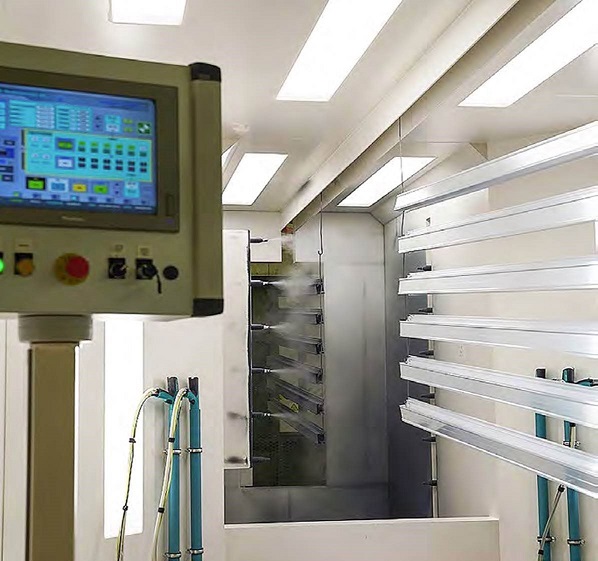
A summary of the key benefits of powder coating
Durability - powder coating is extremely durable which means your Spitifre door will withstand the elements and will stand up well to daily use
Corrosion Resistant – salt, moisture and humidity attack metal. Powder coating provides a protective barrier that helps prevent corrosion.
Chip Resistant - unlike other treatments that can easily crack, peel, chip, scratch and corrode, powder coated aluminium doors are much more durable and will withstand the weather better
Zero Maintenance - because of its durability and resistance to abrasion and corrosion, powder coated aluminium requires virtually zero maintenance. Just a wash down with warm soapy water once a month will ensure that you Spitfire Door will look good for more than 20 years.
Long Lasting, Colour Fast Finish - powder coating is a durable finish that is tougher than conventional paint. Because of this, colours stay brighter and more vibrant for longer than conventional paints.
Environmentally Safe - the powder coating process has very little impact on the environment. No harmful solvents are used and powder coating does not emit vapours or fumes like liquid paint.
10 Year Warranty – a ten-year warranty is only possible because the quality of powder coating is so high and consistent
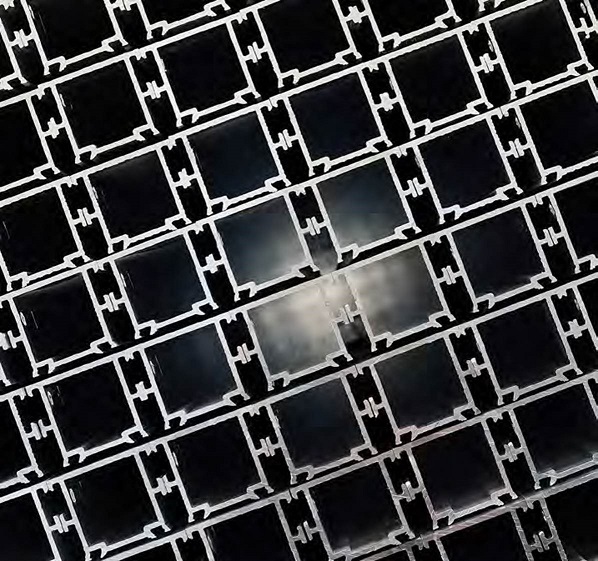
What is Decoral®?
Decoral® is a patented process for Decorating Aluminium, based on Sublimation, which is a physical-chemical process; the direct transition of a substance from the solid phase to the gas phase. Such technology is also called a ‘Heat-Transfer Process’.
The basic requirement being that Spitfire Doors aluminium profiles and aluminium sheets can resist a temperature of 200° Celsius in an oven for 10 minutes with no deformation.
Using the Decoral® process, countless effects and patterns such as woodgrains, concrete or granite can be transferred onto the aluminium surface of our profiles.
In order to apply the Decoral® process, first all profiles must be powder coated and cured. Then a Decoral® heat transfer film, carrying the desired effect is wrapped around the profile. This sublimination film is printed with special inks which can replicate for example a woodgrain effect. Then the wrapped profile is placed inside an oven for 10 minutes and whichever effect is on the film will be burnt into the powder coated finish. The final finish will faithfully replicate the effect that was previously on the sublimated foil.
